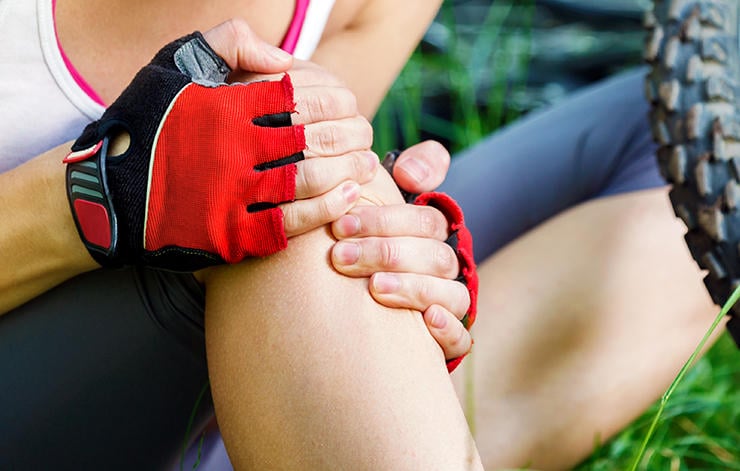Dealing With (And Preventing) Knee Pain
How to safeguard your knees for those 10 to 20 million pedal strokes down the road.
Ugly medical terms are associated with knees and bikes—words that sound like trouble when you say them. Chondromalacia, patellar tendinitis, medial synovial plica syndrome, iliotibial band syndrome: a medical rogues’ gallery of pain and misery.
Does this mean that bike riding is hard on knees? Far from it. In fact, when these injuries are mentioned, cycling is often the rehabilitation of choice. Physical therapists know that when you can’t run, walk, or hobble, you can often pedal.
“Injured or surgically repaired knees want movement, and you want movement,” says Andrew Pruitt, EdD, founder of Colorado’s highly regarded Boulder Center for Sports Medicine, now the CU Sports Medicine and Performance Center. “These things come together on the bike.”
Still, knee injuries are an occasional fact of the cycling life, simply because of the number of revolutions a rider makes. At an average cadence of 90 revolutions per minute, a rider cranks out 5,400 strokes each hour, or about 1.5 million in a 8,000-km year. That’s a lot of potential wear and tear on cartilage, ligaments, and tendons.
Repetition isn’t the only villain. The knee is anything but a simple joint that pumps up and down in a linear, piston-like motion. Instead, Dr. Pruitt says, the knee rolls, glides, and rotates in several planes during each pedal stroke. The cycling leg is anchored at the bottom by the foot, which is attached to the pedal with a rigid shoe. At the other end is the massive bone and ligament edifice of the hip joint. The knee moves between these fixed points, and if this isn’t accommodated by correct body position on the bike and proper placement of the foot on the pedal, bad things happen.
How do you safeguard your knees so that 10 to 20 million pedal strokes down the road they will still be going strong? The key is knowing what to do and what to avoid—on the bike or off.
First, perfect your position. Problems aren’t limited to neophytes. Even experienced riders make mistakes when setting up a new bike. Among the best bike fitting methods is dynamic fit, which means the rider is fit on their bike while pedaling rather than when sitting stationary, and that fit is then assessed via video analysis.
Static measurements can also approximate your ideal position. For saddle height, one popular method was developed in the 1980s. Stand shoeless with your feet shoulder-width apart and have someone measure your inseam from the floor to your crotch. Multiply the result by 0.883. That number is your seat height from the top of the saddle to the middle of the bottom bracket axle measured along the seat tube. This number is only a starting point, so fine-tune it based on experience.
For instance, riders with long feet and those who pedal toes down often require a higher saddle height. A saddle that’s too high may cause pain in the back of the knee, while one that’s too low usually produces pain in the front of the knee. Saddle setback, or fore/aft position, is best adjusted with the bike on a stationary trainer.

READ MORE ON: bike advice injury-prevention lifestyle training programmes

